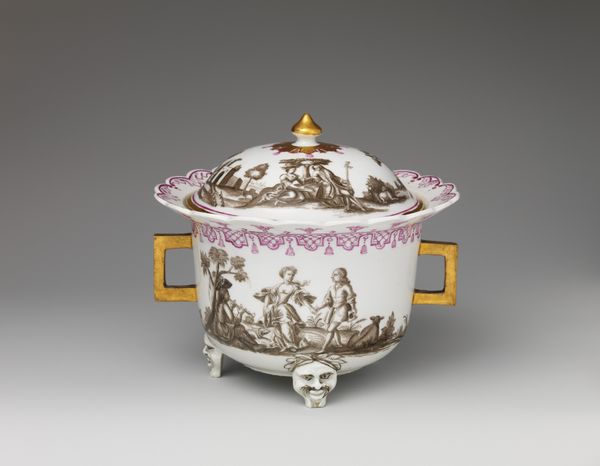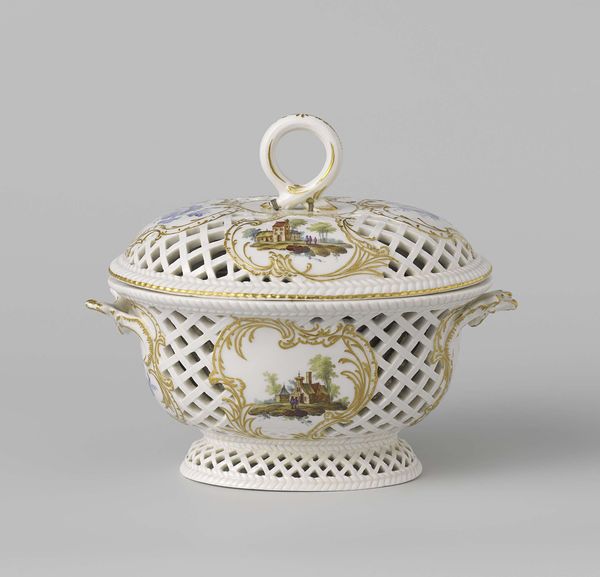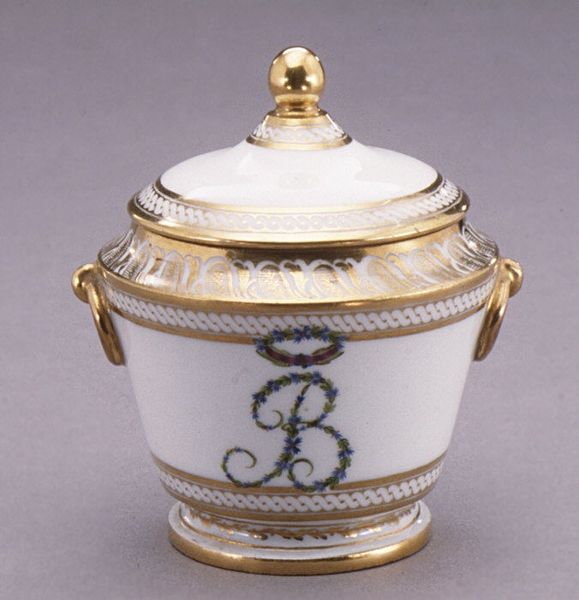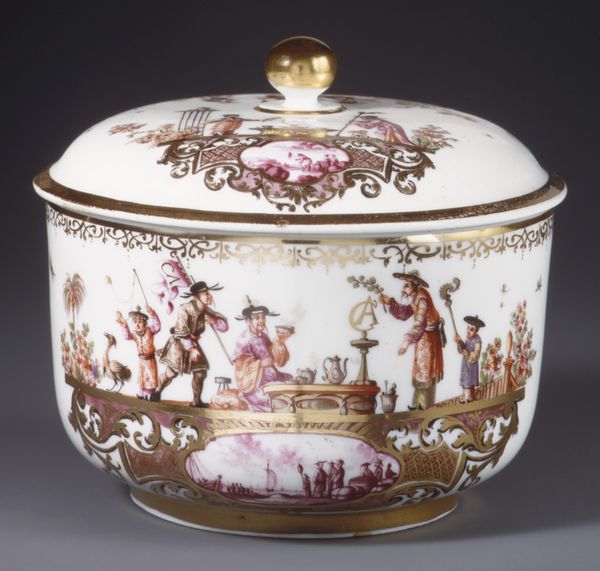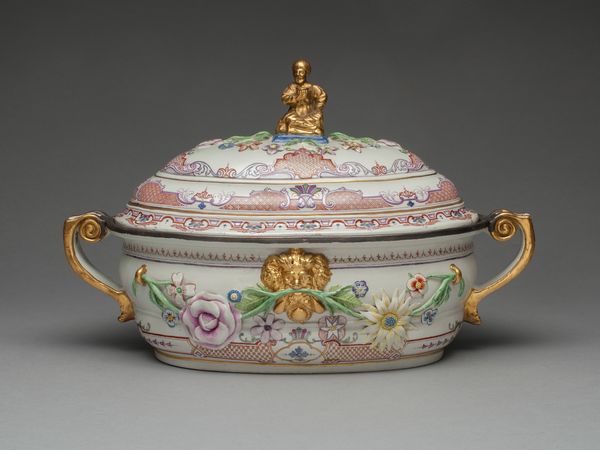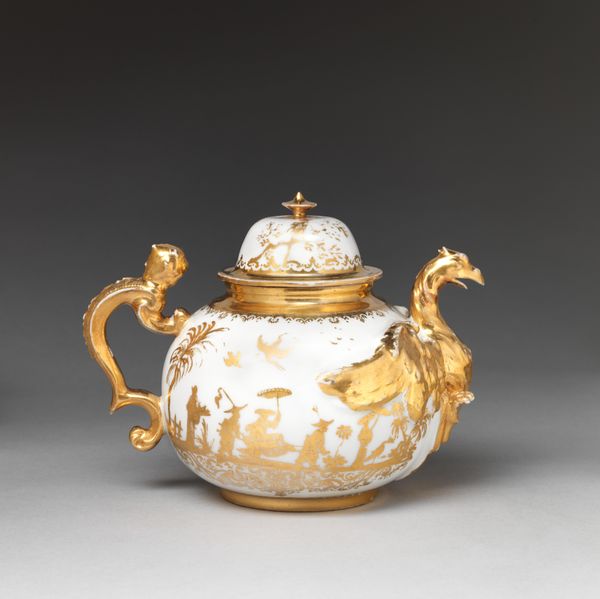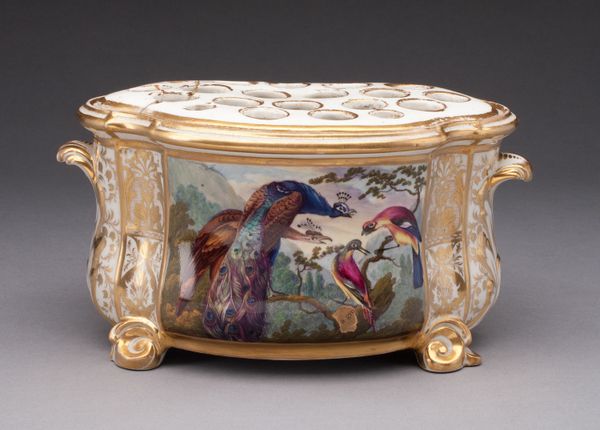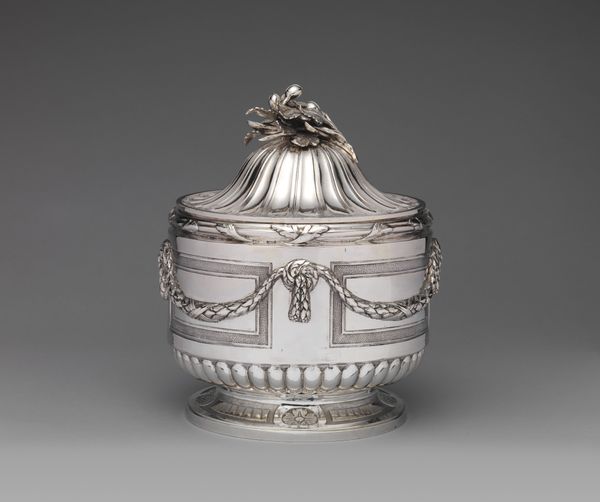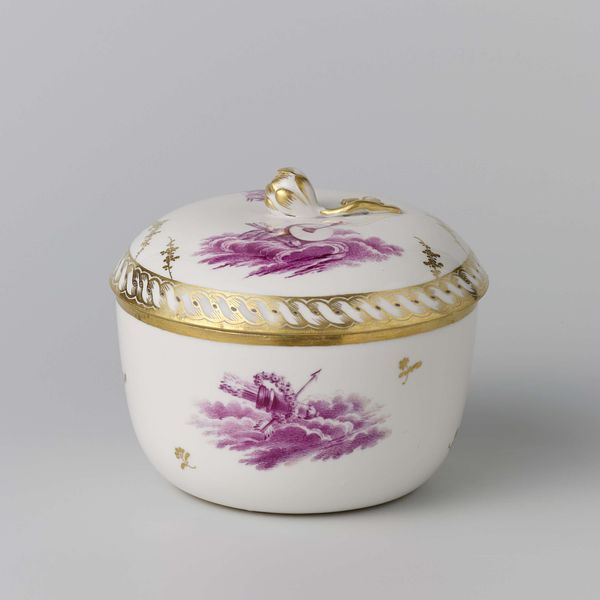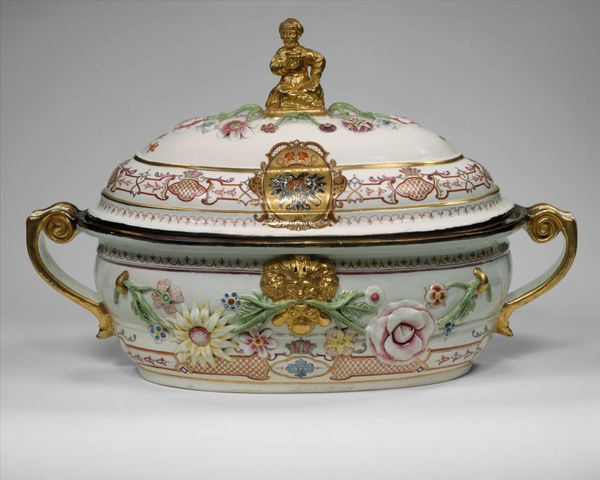
ceramic, porcelain
#
neoclacissism
#
ceramic
#
porcelain
#
product design photgrpaphy
#
ceramic
#
decorative-art
Dimensions: H. 12.1 cm (4 3/4 in.); diam. 14.9 cm (5 7/8 in.)
Copyright: Public Domain
Curator: Here we have an exquisite sugar bowl with a cover, dating back to around 1800. It's attributed to the Worcester Royal Porcelain Company. Editor: It has such a pristine, almost austere feel, despite the intricate designs. The porcelain practically glows. What’s your read on it? Curator: This piece exemplifies Neoclassical aesthetics, popular at the time. Notice the idealized figures borrowed from classical antiquity—recalling the rediscovery of Pompeii and Herculaneum. It reflects a broader fascination with antiquity. Editor: I’m struck by the making of it—the porcelain itself. The fact it's hard-paste suggests it would have been incredibly luxurious due to the labor involved, especially with the transfer printing. This isn't simply a functional object, it is also a reflection of commerce. Curator: Exactly! The rising middle class had more purchasing power, desiring objects like this to display refinement. Owning such a piece was a statement of one's place in society. Editor: Yes, this highly crafted ware underscores how luxury goods became tools for social mobility, though often enabled by oppressive labour. I'm also thinking about the actual transfer of images onto ceramics at the time and what new forms of industrial expertise must have developed alongside the division of labor. Curator: Indeed. Furthermore, pieces like these became sought-after collectibles, exhibited in elaborate displays. The Worcester Royal Porcelain Company gained patronage from the British elite which fueled the success of mass manufacturing and commodity trade at that time. Editor: It’s a powerful object when you consider it. So seemingly delicate, yet loaded with histories of production, consumption, class and aesthetics. Curator: Absolutely. These sugar bowls became a vehicle for complex narratives, and their continued presence in museum collections ensures a continuing dialogue with us today. Editor: I think reflecting on both the object’s manufacture and what it symbolizes highlights the intertwined relationship between industry, art, and social aspiration, especially at a period of big upheaval.
Comments
No comments
Be the first to comment and join the conversation on the ultimate creative platform.

